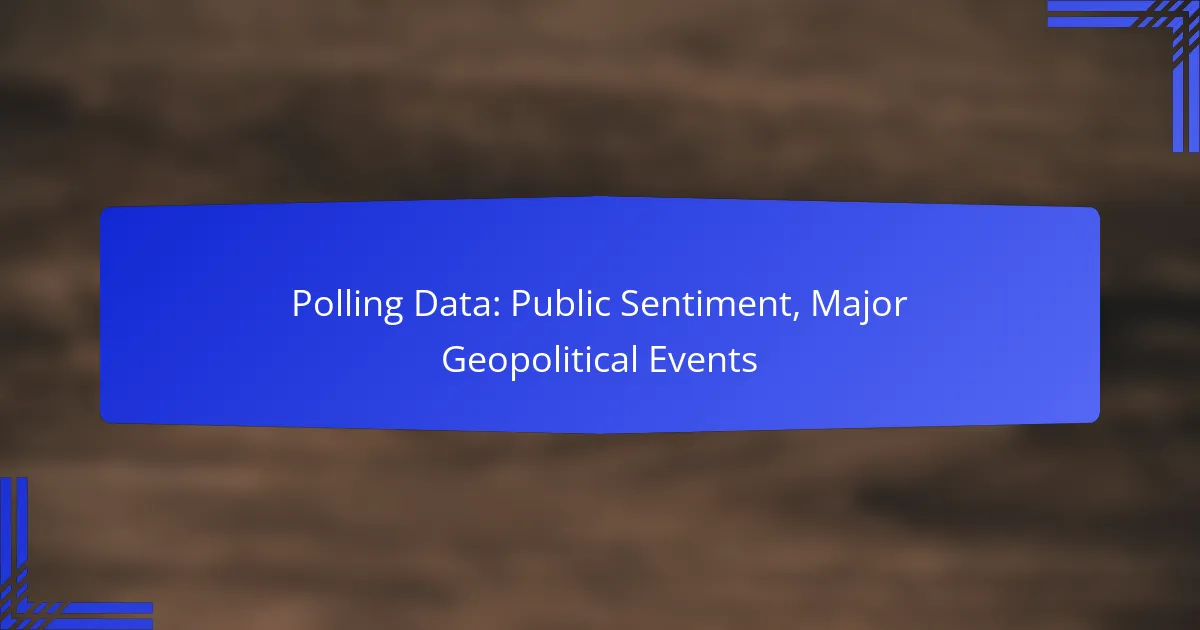Polling data serves as a vital resource for understanding public sentiment surrounding major geopolitical events. By reflecting the opinions and attitudes of the populace, these polls illuminate how significant occurrences, such as elections and international conflicts, shape perceptions of stability and trust. This information is not only essential for policymakers but also enables businesses to align their strategies with public sentiment, ultimately enhancing their competitive advantage.
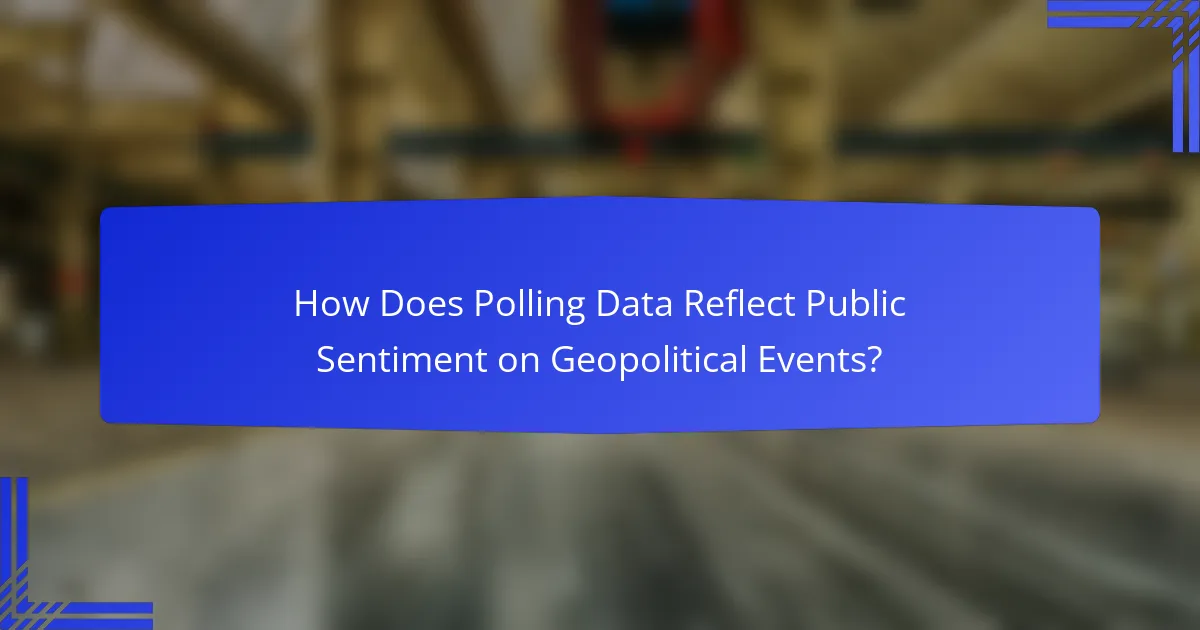
How Does Polling Data Reflect Public Sentiment on Geopolitical Events?
Polling data serves as a crucial tool for gauging public sentiment regarding significant geopolitical events. By capturing opinions and attitudes, these polls provide insights into how people perceive and react to global issues.
Polling data shows trends in public opinion
Polling data reveals trends in public opinion by tracking changes over time. For instance, a poll conducted before and after a major conflict can illustrate shifts in support for government actions or international interventions. These trends help analysts understand the evolving landscape of public sentiment.
Regularly conducted polls can highlight demographic differences, such as variations in opinion based on age, education, or geographic location. This information is valuable for policymakers and organizations aiming to align their strategies with public views.
Data sources include surveys and social media
Polling data is primarily gathered through structured surveys, which can be conducted via telephone, online platforms, or in-person interviews. These surveys often include questions about specific geopolitical events, allowing researchers to quantify public sentiment effectively.
In addition to traditional surveys, social media platforms have become significant sources of real-time sentiment analysis. By monitoring discussions and reactions to geopolitical events, analysts can gauge public opinion trends more dynamically, capturing immediate responses that formal surveys may miss.
Geopolitical events influence sentiment shifts
Geopolitical events, such as military conflicts, diplomatic negotiations, or economic sanctions, can significantly influence public sentiment. For example, a sudden escalation in a conflict may lead to increased public support for military action or, conversely, heightened calls for peace.
Understanding these sentiment shifts is essential for governments and organizations. They can use polling data to anticipate public reactions and adjust their messaging or policies accordingly. Being aware of how current events shape opinions allows for more effective communication strategies and decision-making processes.
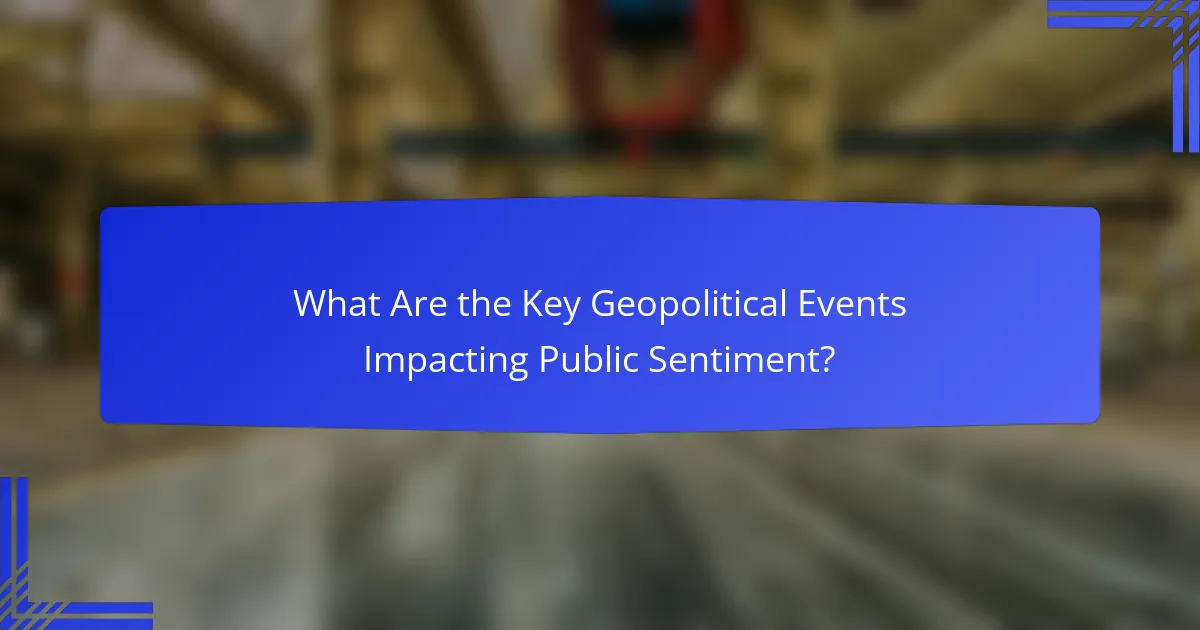
What Are the Key Geopolitical Events Impacting Public Sentiment?
Key geopolitical events significantly influence public sentiment by shaping perceptions of stability, trust, and national identity. Major elections, international conflicts, and economic crises are pivotal in altering how citizens view their governments and the world around them.
Major elections shape voter sentiment
Major elections often serve as a barometer for public sentiment, reflecting the priorities and concerns of the electorate. For instance, in the lead-up to elections, polls frequently indicate shifts in voter preferences based on campaign issues, candidate popularity, and party platforms.
In countries like the United States, elections can pivot on topics such as healthcare, immigration, and economic policy, which directly influence voter turnout and engagement. Observing these trends can provide insights into how public sentiment may evolve post-election.
International conflicts alter public perspectives
International conflicts can dramatically shift public perspectives, often leading to increased nationalism or skepticism towards foreign policy. For example, ongoing tensions in regions like Eastern Europe or the Middle East can evoke strong emotional responses, impacting how citizens view their leaders’ decisions.
Public sentiment may also be swayed by media coverage of conflicts, which can either galvanize support for military action or foster calls for diplomacy. Understanding these dynamics is crucial for analyzing shifts in public opinion during times of crisis.
Economic crises affect trust in government
Economic crises, such as recessions or inflation spikes, can severely undermine public trust in government institutions. When citizens face job losses or rising costs, their confidence in leadership often wanes, leading to increased scrutiny of government policies and actions.
In many cases, economic downturns prompt calls for accountability and reform, as citizens demand effective solutions. Monitoring economic indicators alongside public sentiment can provide a clearer picture of how crises shape political landscapes and influence future elections.

How Can Businesses Leverage Polling Data for Strategic Decisions?
Businesses can leverage polling data to make informed strategic decisions by understanding public sentiment and preferences. This data helps companies align their strategies with consumer expectations, enhancing their competitive edge.
Polling data informs marketing strategies
Polling data provides insights into consumer attitudes and behaviors, allowing businesses to tailor their marketing strategies effectively. By analyzing trends and preferences, companies can create targeted campaigns that resonate with their audience.
For example, if polling indicates a growing interest in sustainability, a business might emphasize eco-friendly practices in its advertising. This alignment can lead to increased brand loyalty and customer acquisition.
Sentiment analysis guides product development
Sentiment analysis of polling data helps businesses identify what features or improvements customers desire in products. By understanding positive and negative sentiments, companies can prioritize development efforts that align with consumer needs.
For instance, if feedback reveals dissatisfaction with a product’s usability, a company can focus on redesigning that aspect. This proactive approach can enhance product success and customer satisfaction.
Data-driven decisions enhance customer engagement
Utilizing polling data enables businesses to engage customers more effectively by personalizing interactions and offerings. Companies can analyze data to segment their audience and tailor communications to specific groups.
For example, a business might use polling insights to send targeted promotions to different demographics, increasing the likelihood of conversion. Regularly updating engagement strategies based on fresh polling data can keep customer interactions relevant and meaningful.
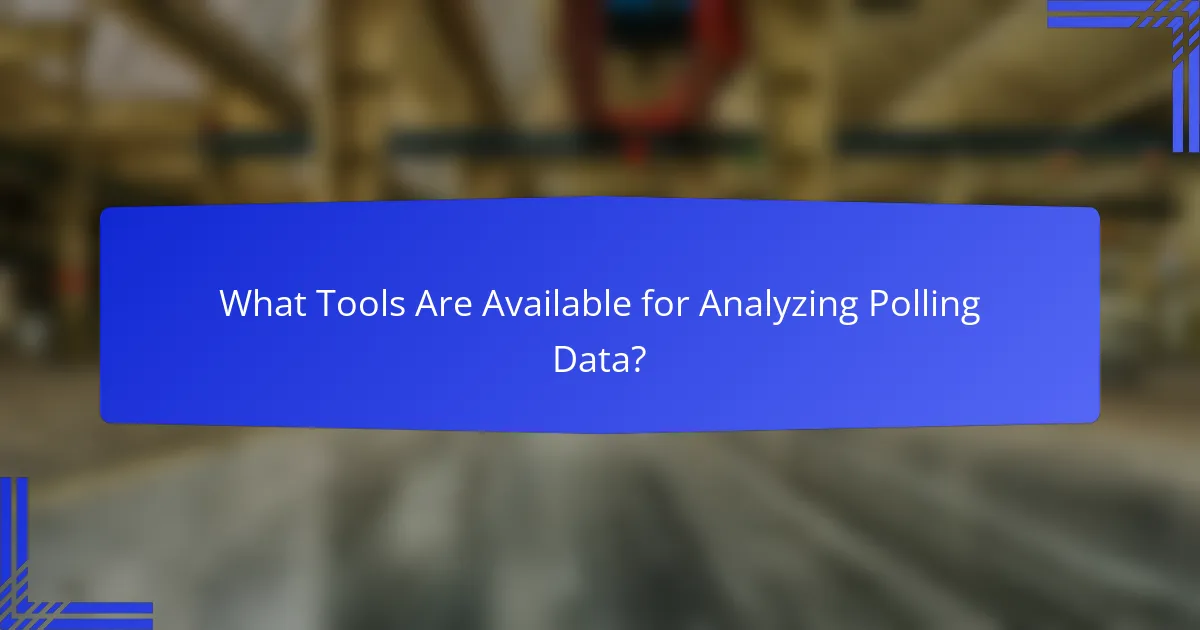
What Tools Are Available for Analyzing Polling Data?
Several tools can effectively analyze polling data, each serving specific purposes such as survey creation, data visualization, and real-time insights. Selecting the right tool depends on your analytical needs and the complexity of the data involved.
Qualtrics for survey creation
Qualtrics is a robust platform designed for creating and distributing surveys. It allows users to design customized questionnaires with various question types, including multiple choice, text entry, and matrix questions.
When using Qualtrics, consider its advanced features like branching logic and embedded data, which enhance survey relevance and accuracy. It’s particularly beneficial for organizations needing detailed feedback on public sentiment regarding geopolitical events.
Tableau for data visualization
Tableau is a powerful data visualization tool that helps users create interactive and shareable dashboards. It transforms raw polling data into visually appealing graphs and charts, making trends easier to identify and understand.
To maximize Tableau’s effectiveness, ensure your data is clean and well-organized before importing. This tool is ideal for presenting complex data sets to stakeholders, allowing for quick insights into public opinion shifts over time.
Google Trends for real-time insights
Google Trends provides real-time insights into public interest and sentiment by analyzing search queries. It can reveal how specific geopolitical events influence public attention and sentiment over time.
Utilizing Google Trends is straightforward; simply enter keywords related to your polling data to see trends over various time frames. This tool is particularly useful for gauging immediate public reactions to breaking news or major events, offering a snapshot of sentiment that can complement traditional polling methods.
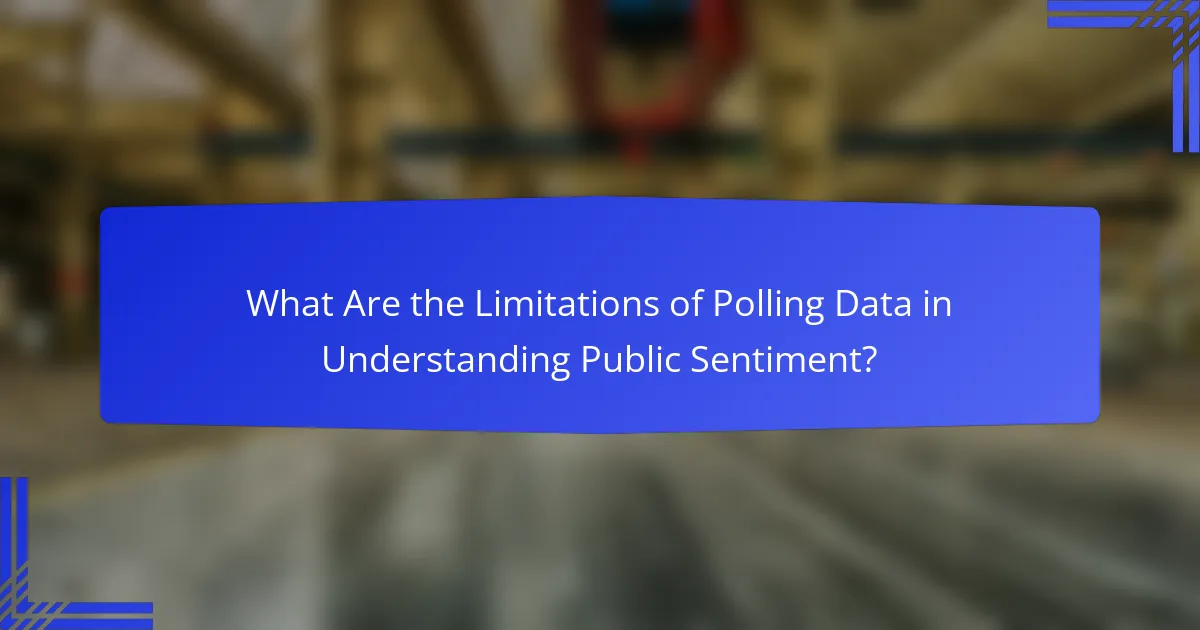
What Are the Limitations of Polling Data in Understanding Public Sentiment?
Polling data has significant limitations that can hinder its effectiveness in accurately representing public sentiment. Factors such as sample bias, response rates, and the fluid nature of public opinion can lead to misleading conclusions.
Sample bias affects data accuracy
Sample bias occurs when the group surveyed does not accurately represent the broader population. For instance, if a poll predominantly includes responses from urban residents, it may overlook the views of rural communities, skewing results. This can lead to a misinterpretation of public sentiment on key issues.
To mitigate sample bias, pollsters should aim for a diverse demographic that reflects age, gender, ethnicity, and geographic distribution. Using stratified sampling techniques can enhance the representativeness of the data collected.
Response rates can skew results
Low response rates can significantly affect the reliability of polling data. When only a small percentage of those contacted participate, the results may not accurately reflect the views of the entire population. For example, a poll with a response rate below 10% may yield results that are not generalizable.
Pollsters should strive for higher response rates by employing various outreach methods, such as online surveys, phone interviews, and in-person polling. Offering incentives can also encourage participation and improve data quality.
Public sentiment can change rapidly
Public sentiment is not static; it can shift quickly due to current events, social movements, or economic changes. For instance, a sudden geopolitical crisis may alter public opinion on foreign policy within days. Polls conducted during such volatile periods may not capture the evolving attitudes of the populace.
To account for these fluctuations, it is essential to conduct polls frequently and analyze trends over time rather than relying on a single snapshot. Tracking changes in sentiment can provide a more accurate understanding of public opinion dynamics.
